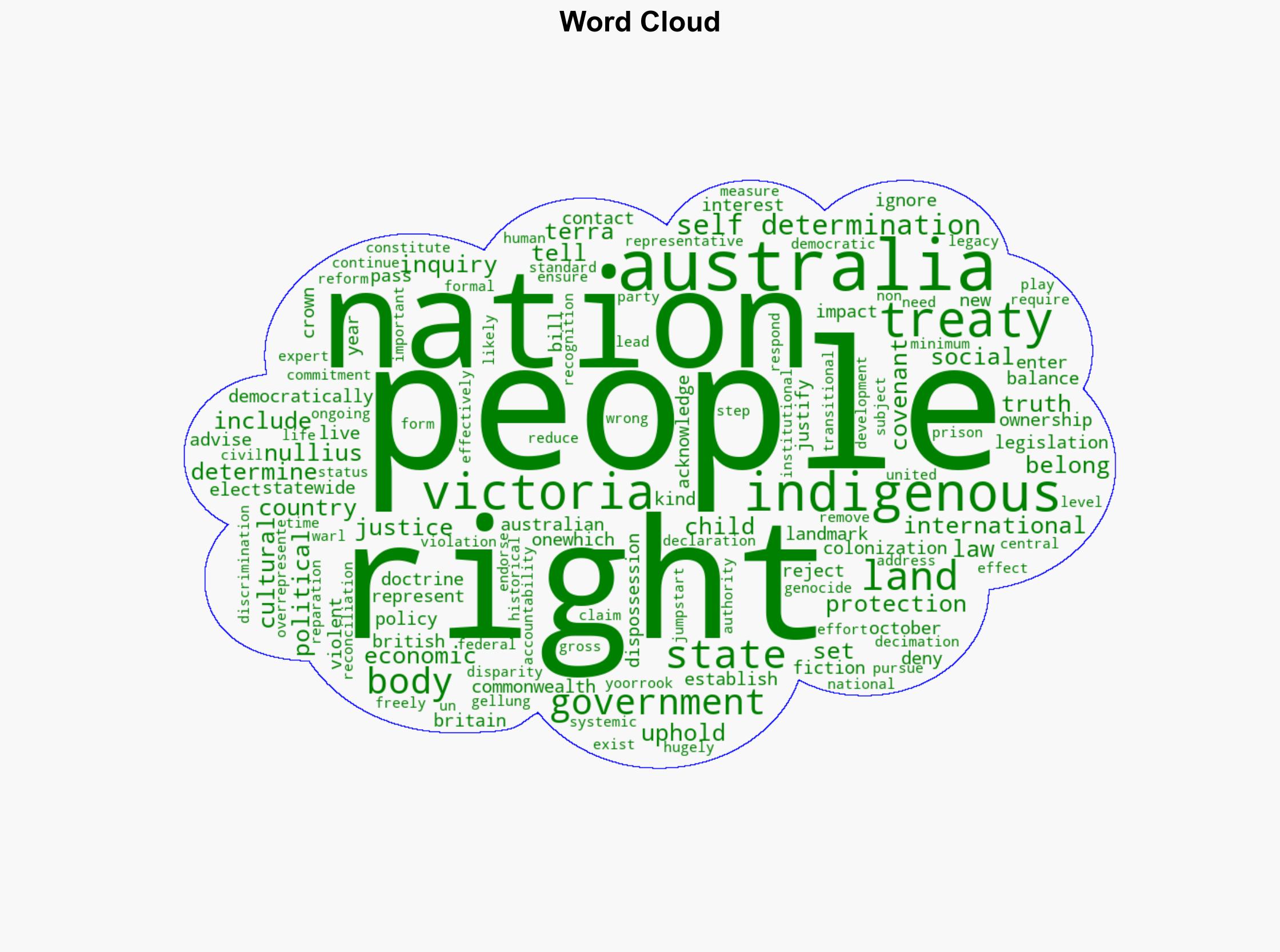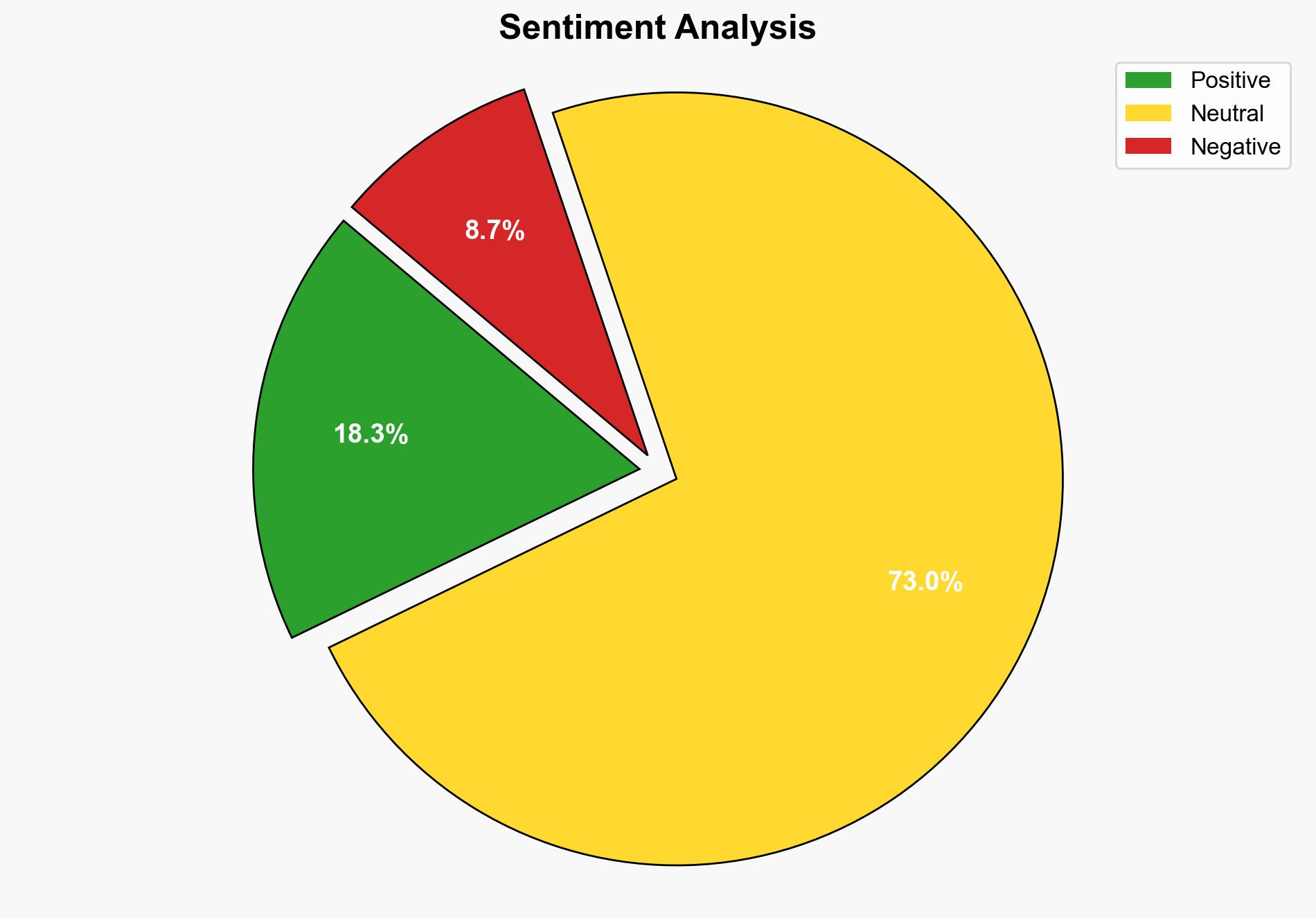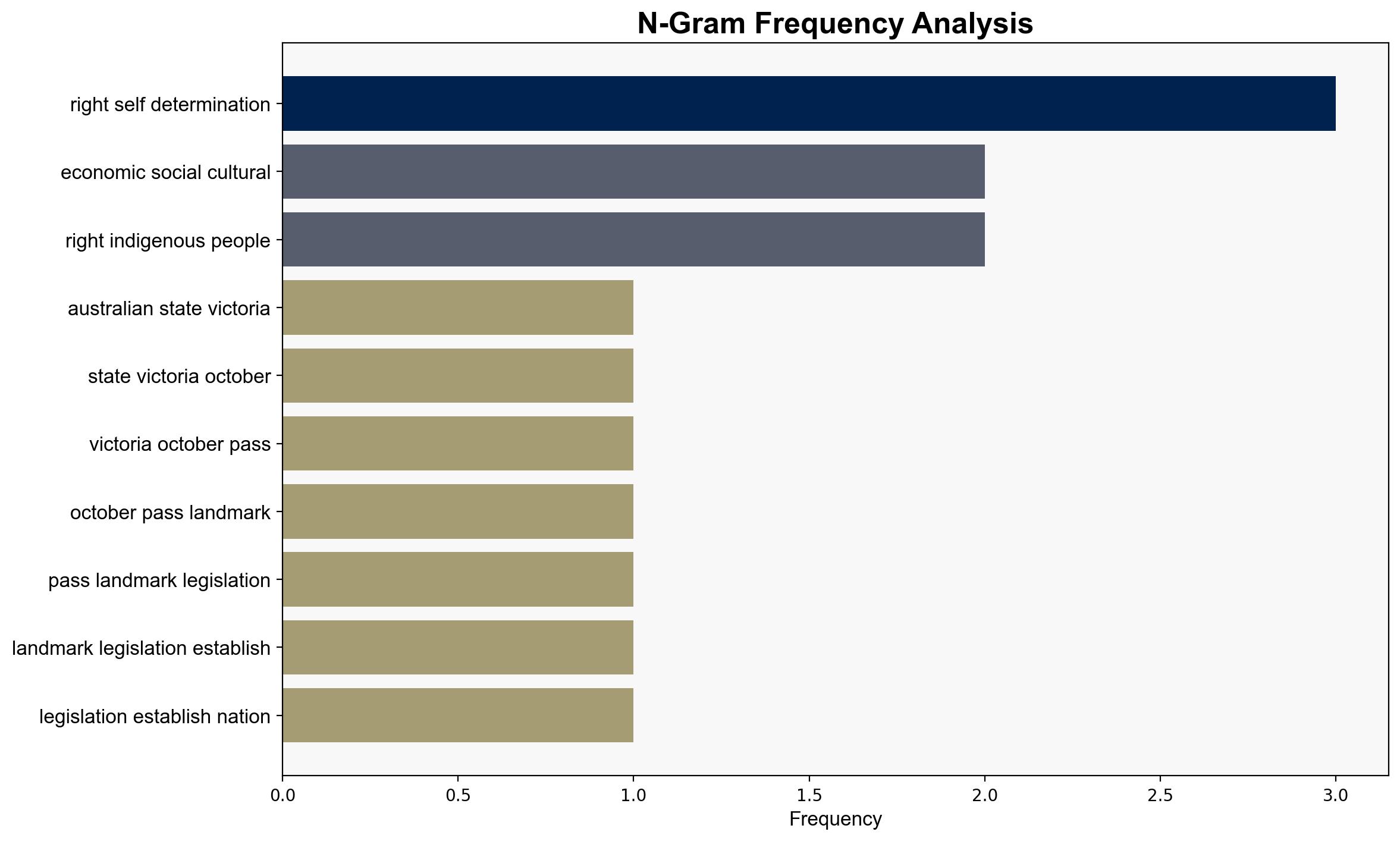Australia Adopts First Treaty with Indigenous Peoples – Human Rights Watch
Published on: 2025-11-07
Intelligence Report: Australia Adopts First Treaty with Indigenous Peoples – Human Rights Watch
1. BLUF (Bottom Line Up Front)
The establishment of a treaty between the state of Victoria and Indigenous peoples represents a significant step towards addressing historical injustices and promoting Indigenous rights. The most supported hypothesis is that this treaty will serve as a catalyst for broader national reforms in Australia. Confidence level: Moderate. Recommended action: Monitor the implementation and impact of the treaty to assess its effectiveness and potential as a model for national adoption.
2. Competing Hypotheses
Hypothesis 1: The treaty in Victoria will lead to substantial improvements in Indigenous rights and serve as a model for national reforms across Australia. This hypothesis is supported by the establishment of a democratically elected body to represent Indigenous interests and the commitment to truth-telling and accountability.
Hypothesis 2: The treaty will face significant implementation challenges and may not lead to meaningful change at the national level. This is due to potential resistance from political entities and systemic barriers that have historically hindered Indigenous rights advancements.
Using ACH 2.0, Hypothesis 1 is better supported due to the structured framework and formal commitments outlined in the treaty, which provide a clear path for potential replication at a national level.
3. Key Assumptions and Red Flags
Assumptions:
– The Victorian government will fully commit to the treaty’s implementation.
– Other Australian states and the federal government will consider similar treaties.
Red Flags:
– Lack of federal support could undermine the treaty’s impact.
– Potential opposition from non-Indigenous groups or political factions.
4. Implications and Strategic Risks
The treaty could set a precedent for addressing Indigenous rights, potentially reducing systemic discrimination and overrepresentation in prisons. However, failure to implement effectively could exacerbate tensions and lead to increased calls for reform. Economically, successful implementation could improve social cohesion and economic opportunities for Indigenous communities.
5. Recommendations and Outlook
- Monitor the treaty’s implementation closely to identify best practices and challenges.
- Engage with Indigenous leaders to ensure their perspectives guide national discussions.
- Scenario-based projections:
- Best Case: The treaty leads to comprehensive national reforms and improved Indigenous rights.
- Worst Case: Implementation fails, leading to increased tensions and setbacks in Indigenous rights.
- Most Likely: Gradual progress with mixed results, requiring ongoing adjustments and advocacy.
6. Key Individuals and Entities
– Gellung Warl (new representative body)
– Victorian government
– Indigenous leaders in Victoria
7. Thematic Tags
Indigenous rights, national reform, systemic discrimination, Victoria, Australia





